The outer shells of viruses and other biological systems assemble themselves spontaneously from identical sub-units composed of proteins coded for by the organism’s genes. This way, a simple set of instructions can build a complex and functional structure.
Now, Makoto Fujita and colleagues Masahide Tominaga, Keisuke Suzuki, Masaki Kawano, and Takahiro Kusukawa at The University of Tokyo, Shigeru Sakamoto, and Kentaro Yamaguchi at Chiba University and Tomoji Ozeki of Tokyo Institute of Technology have used this natural approach to construction to help them develop self-organizing spherical networks of organic molecules. Such supramolecular compounds might be useful as catalysts, sensor molecules, or to help extract other smaller molecules from mixtures.
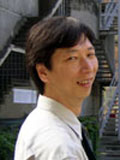
Makoto Fujita
The team knew from their earlier work, that short, rod-shaped molecules with sticky ends that can join to metal ions can form two-dimensional grids with the metal ions forming the corners of a grid of the rod-like molecules. There is no theoretical limit on the size of these grids. Fujita reasoned that banana-shaped rods might link up similarly but rather than forming infinite flat grids, they would form curved surfaces. The team used biphenyl-based compounds and mixed them with the noble metal palladium. The result was the spontaneous formation of large, spherical structures with diameters of about 4 nanometres.
The researchers then analysed their spheres using NMR spectroscopy and showed that each acts like a single large molecule. They could also crystallize the spheres and so carry out an X-ray diffraction study to determine the exact structure, showing that each sphere contains twelve metal centres and 24 organic units.
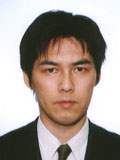
Masahide Tominaga
The next step was to alter the surface of the spheres by adding functional groups, or ligands, as attachment points to the metal centres. Fujita and his colleagues have, for example, added porphyrin systems to these ligands. Porphyrins are well-characterised nitrogen-containing molecular rings with a metal at their centre found in light-absorbing proteins and in the chlorophyll of plants and blue-green algae. A porphyrin system is also present in the blood pigment haemoglobin, which carries, transports and exchanges oxygen and carbon dioxide. Fujita’s team reason that such modifications to their spheres could enable them as light-gathering systems or as sensor units for different gases.
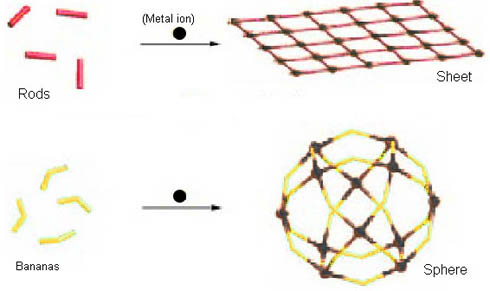
Rod for sheets, bananas for balls (Adapted from Wiley/VCH by David Bradley)
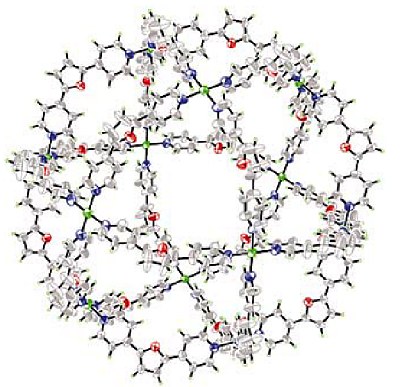
The crystal structure of a self-assembled sphere (Credit: Wiley/VCH)
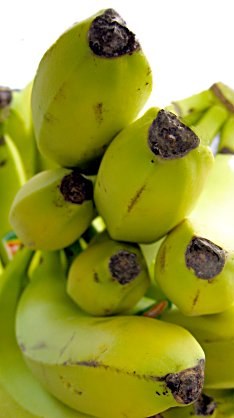
Banana-shaped molecules could ring the changes for chemists (Photo by David Bradley)
Further reading
Angew. Chem. Int. Ed. 2004, 43, 5621-5625
http://dx.doi.org/10.1002/anie.200461422
Fujita Lab
http://fujitalab.t.u-tokyo.ac.jp/index_e/